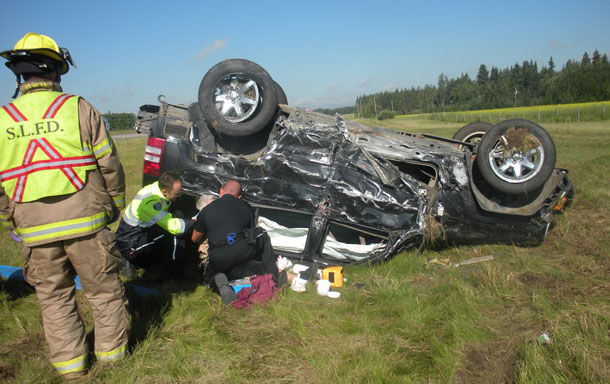
Edmonton, Alta. – Staying safe on the highways is important. There are lots of distractions for drivers today, between texting, and onboard electronics. Keeping yourself focused on driving can help reduce the risk of accidents and injury.
The Royal Canadian Mounted Police in Alberta share, “Warmer temperatures typically means there will be a greater mix of vehicles on the roads, namely trucks, tractor-trailers and buses. In Alberta, commercial and passenger vehicles collisions remain a concern”.
The RCMP reminds motorists that every road user has a part to play in ensuring their own safety and that of others. In 2015, there were 38 people killed and 556 injured in collisions involving tractor-trailers in Alberta. (Alberta Transportation)
“Sharing the road with other vehicles, no matter the type, is essential to keeping our roads safe,” says Steve Daley, Acting Officer-in-Charge, Alberta RCMP Traffic Services. “Drivers of passenger cars and tractor-truck drivers have to be mindful of one another. This means, staying out of a truck’s blind spots, signaling well in advance, leaving ample room between your vehicle and the one in front of you, and exercising patience behind the wheel.”
Below are some tips to keep you safe on the roads.
For drivers of passenger cars
- Stay out of blind spots! Passenger cars should stay far enough behind big trucks so that you can see both side mirrors on the truck. If you can’t see the truck driver, he can’t see you either! (Alberta Transportation 2015)
- Never cut in front of commercial vehicles. (Alberta Transportation 2015)
- Allow yourself extra time to pass a big rig. (Alberta Transportation 2015)
- Signal well in advance when planning to turn or change lanes. (Alberta Transportation 2015)
- If you are driving beside a truck, watch for turn signals as trucks require a wide turning radius. (Alberta Transportation 2015)
- Maintain an increased following distance between you and the vehicle in front of you when a large truck is behind you. Because trucks have longer stopping distances this may allow you enough time to stop in an emergency without being rear-ended by the truck. (Alberta Transportation 2009)
For drivers of commercial vehicles
- Pull over when feeling tired – it could save your life or someone else’s. (Alberta Transportation 2015)
- Fatigue can play a role in large vehicle collisions. Truck drivers were more likely than all drivers in casualty collisions to be fatigued or asleep at the time of the crash than drivers of other vehicles. (Alberta Transportation 2015)
- Signal well in advance when planning to turn or change lanes to give other drivers time to react accordingly. (Alberta Transportation 2015)
- Be alert to the actions of oncoming drivers and other drivers at intersections. (Alberta Transportation 2015)
- Complete proper pre and post-trip inspections to ensure your vehicle is in good operating condition. (Alberta Transportation 2015)
- Ensure your vehicle is within the allowed weight limit to prevent damage to the infrastructure. (Alberta Transportation 2015)






